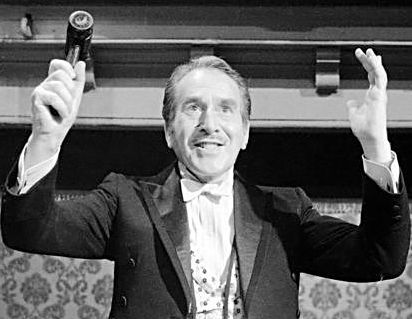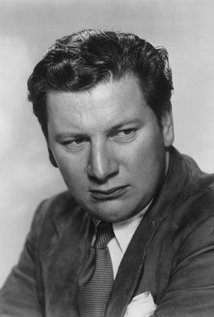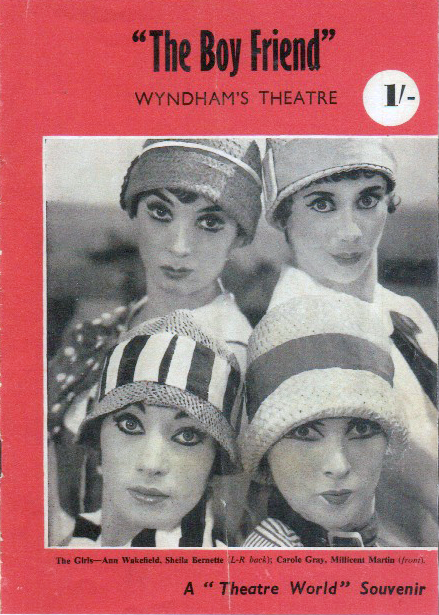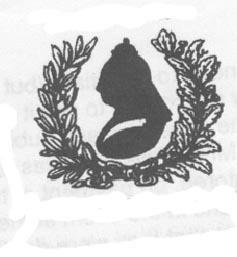The outbreak of the second World War in 1939 inevitably caused serious problems. The Players' premises, on the top floor of an old building with a glass roof and a hydraulic lift, were not an ideal venue during an air-raid. Eventually, after two short-term arrangements (including a number of performances in a member's drawing-room in St. John's Wood), the Players' found a refuge in Albemarle Street in the former El Morocco Night Club. This was in a basement in one of the few concrete buildings in London. Thanks to this good fortune, the Players' (along with The Windmill) 'never closed' throughout the War.
Leonard Sachs was called up for military service and (riding in a taxi to Waterloo to join his troop train) he made over the Players' Theatre Club to Jean Anderson, already an established actress and Players' artiste. Jean contrived to keep the Club open and solvent for the next five years, before going on to a very distinguished career both on stage and on television in series such as 'Tenko' and 'The Brothers'. Under her management, the Players' became a haven for Londoners suffering the Blitz, as well as a home from home for many of the allied forces also living in London.
Americans, Australians, Canadians, Czechs, Danes, Dutch, the Free French, Indians, New Zealanders, Norwegians, Poles, Rhodesians, South Africans - all were to be found among the Players' audience. Indeed, to this day, every Players' audience usually contains a number of 'visitors from abroad' who are duly greeted and teased. In addition, nearly every Sunday saw a contingent of Players' artistes entertain in hospitals, at gun-sites and searchlight emplacements. James Robertson Justice made his debut as Chairman and launched his film career at this time.
With the end of the War, Leonard Sachs returned to take up the reins again and was immediately obliged to seek yet another location. Having rented a small flat in Craven Street, he was looking out of a rear window one day at the brick face of the Hungerford Arches under Charing Cross Station, when he faintly discerned the legend "Forum Cinema". Sending Bill Draper, the Stage Carpenter, round to investigate, they found that this 'arch and a half' had indeed been a theatre from 1910 onwards.
During the War, it had been turned into storage for the Army Corps of Cinematography. Of greater importance, was the discovery that this arch had originally been in the music hall created by the Gatti Brothers. The Gattis had owned two music-halls, Gattis' 'Underneath the Arches' in Villiers Street and Gattis' 'The Road' in Westminster Bridge Road. The building in Villiers Street had been known as the Hungerford Music Hall, dating back to 1865. Although this provenance was very exciting, the building had been very neglected and lacked any theatre fittings or equipment.
Enquiries at the War Office put Leonard in touch with a sympathetic Senior Officer who remembered the Players' company's visits to the sites and camps. Orders were given, and the building was released within a matter of days. Players' members and artistes rallied round and, incredibly, the building was open for business within three weeks. For a time, the Membership lists over-subscribed, as the Club went from strength to strength. New talent was discovered or returned to theatrical life.
Hattie Jacques, Bill Owen, Ian Carmichael, Clive Dunn, Ian Wallace and John Hewer appeared regularly on the bill. They provided a strong lead to the brilliant newcomers joining the company - Daphne Anderson, Patsy Rowlands, Maggie Smith, Marian Studholme, Marion Grimaldi, and Margaret Burton being but a few.
Leonard was asked to present a similar show at the Festival Gardens, for the Festival of Britain. So favourable was the response, that the great theatre chain of the time, Moss Empires, invited Sachs to undertake a long tour of all the major variety theatres in the United Kingdom. This triggered the interest of BBC Leeds, and in due course "The Good Old Days" reached BBC television. Originally only a few programmes went out, and Don Gemmel (Leonard's successor as Director of the Players') was Chairman. Such was public acclaim, that the show was scheduled for first four, then thirteen, then twenty-six weekly editions. It remained a part of the BBC light entertainment for 32 years and was frequently to be found in the 'top ten' in terms of ratings.



